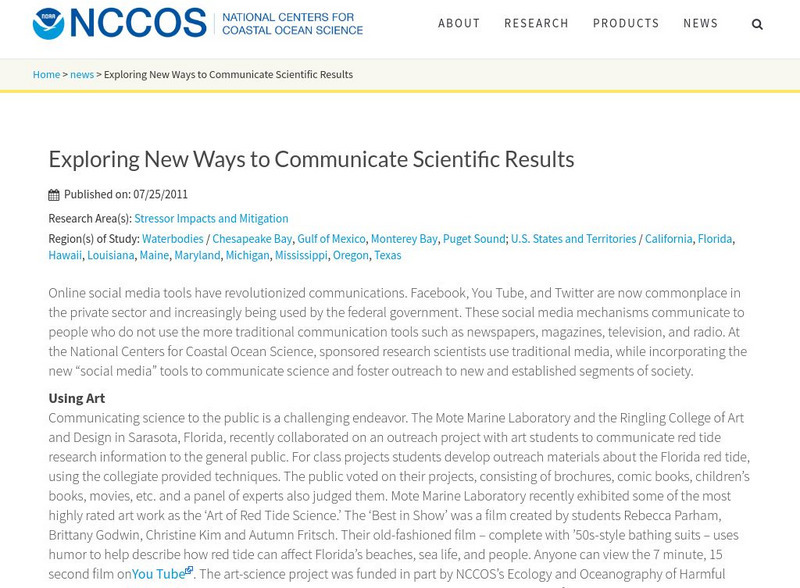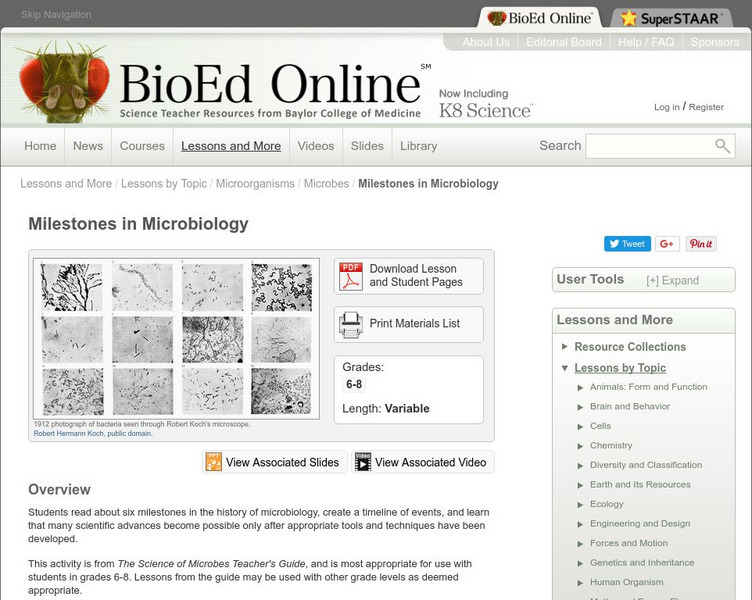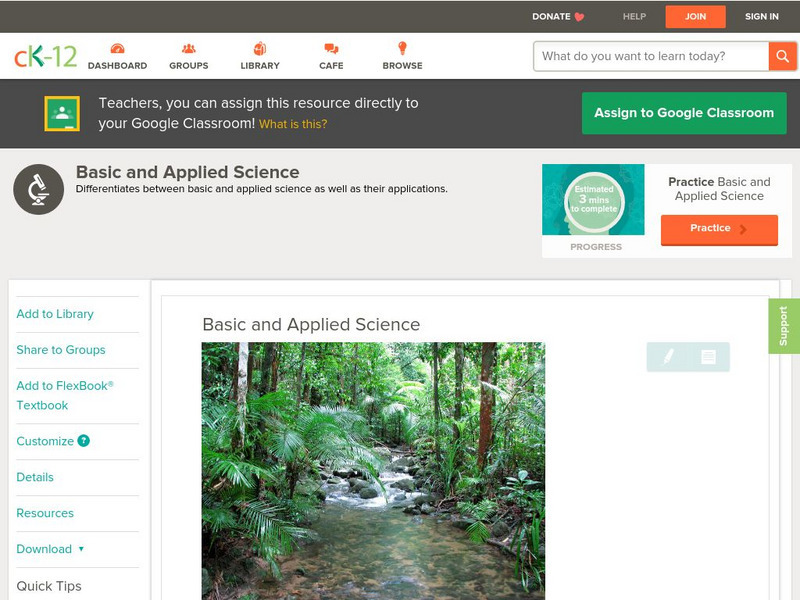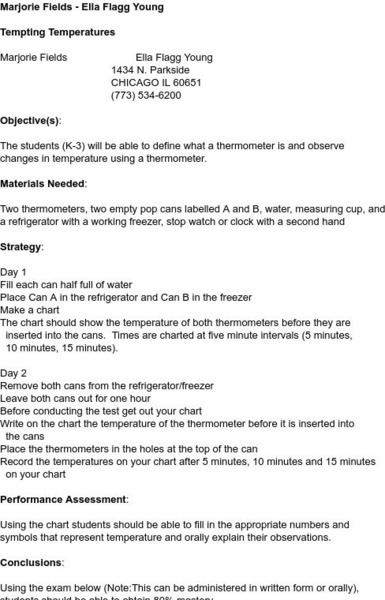NOAA
Noaa: Nccos: Exploring New Ways to Communicate Scientific Results
Discusses the many types of media technology that scientists have available today to communicate the results of their research. These include social media tools, educational web pages, videos, virtual worlds, and podcasts. Many examples...
Concord Consortium
Mobile Inquiry Technology: Calibrating Thermometers
For this activity, students examine how thermometers are calibrated. They develop an understanding of the importance of having standard measurement tools for accuracy in scientific research.
BioEd Online
Bio Ed Online: The Science of Microbes: Milestones in Microbiology
Students read about six important discoveries in microbiology and put them on a timeline. They develop an understanding of how these discoveries connect to the invention of new scientific tools and technology. The lesson and PowerPoint...
PBS
Pbs Teachers: Scientific American: Pieces of Mind: Remembering What Matters
Explore how the new technology of PET (positron emission tomography) imaging has given researchers a tool to look inside the brain. Investigate uses of this technology in brain research and list ideas for future uses of PET scans.
Math Science Nucleus
I. Science Ma Te: Integrating Science, Math and Technology
This site offers a wealth of online textbook-related materials that encourage the discovery of science in the world around us. Enter the site to access material on specific topics. Each section contains reading material (complete with...
CK-12 Foundation
Ck 12: Life Science: Basic and Applied Science
[Free Registration/Login may be required to access all resource tools.] Science can be "basic" or "applied." The goal of basic science is to understand how things work. Basic science is the source of most scientific theories. Applied...
National High Magnetic Field Laboratory
Magnet Academy: Jean Charles Athanase Peltier (1785 1845)
Although he didn't start studying physics until he retired from the clock-making business at age 30, French native Jean Peltier made immense contributions to science that still reverberate today. Even with the primitive tools available...
Science and Mathematics Initiative for Learning Enhancement (SMILE)
Smile: Tempting Temperatures
In this lesson plan students learn how to use a thermometer and compare changes in temperature using water in the fridge and water in the freezer. Helps students create charts to analyze data.
Science Education Resource Center at Carleton College
Serc: Bioinformatics
This project is a series of interrelated modules designed to introduce the student to modern biological techniques in the area of bioinformatics. Bioinformatics is the application of computer technology to the management of biological...
Alabama Learning Exchange
Alex: To Herb or Not to Herb
This unit allows students to research some common herbal supplements to evaluate the safety and effectiveness of the herb. Students will compare the herbal supplements to pharmaceutical medicines to judge which is the better choice....
Texas Education Agency
Texas Gateway: Lab Equipment
In the following lesson students will be introduced to general and specialized lab equipment.










